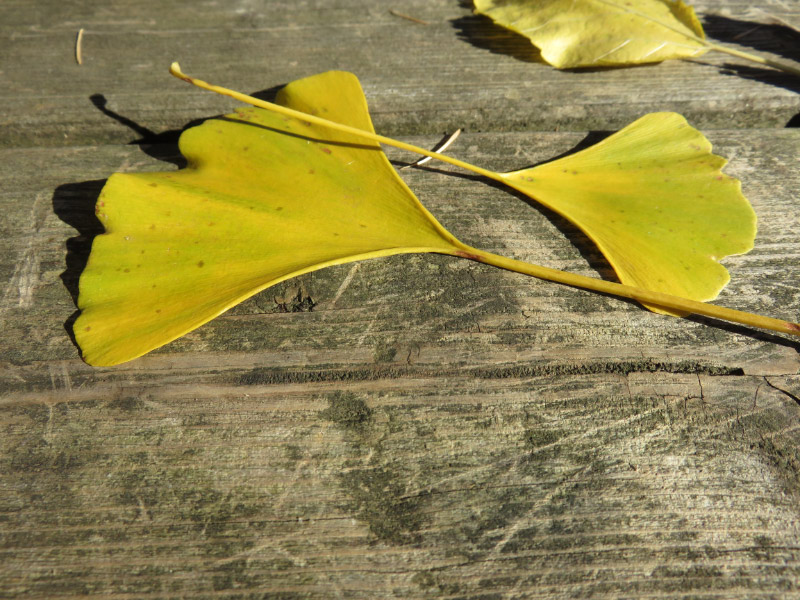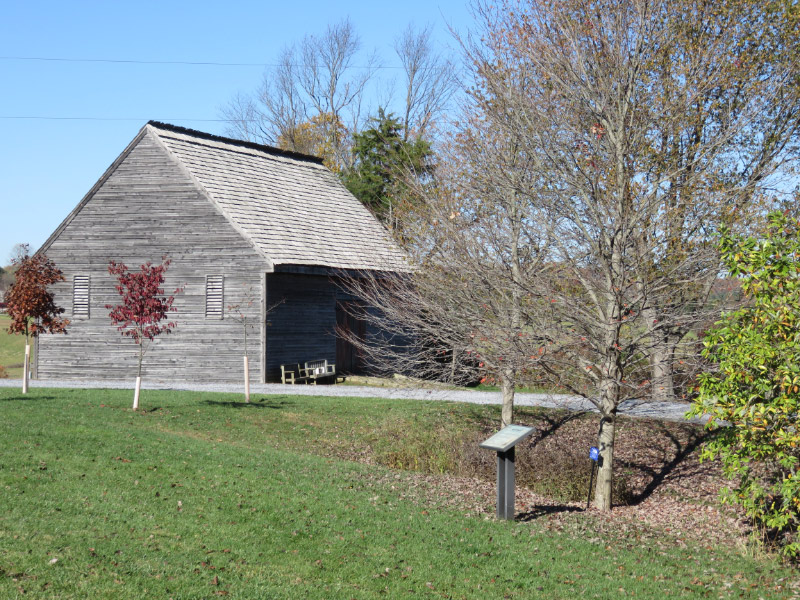Maunakea
/ The Maunakea visit was probably the most planned day of our stay in Hawaii for several reasons. We had to rent a car from a local company that permitted taking the car up the mountain (the nationwide car rental companies don’t allow it) and we had to prepare ourselves for the altitude change. Our rental house was at about 3,000 feet; the Maunakea vistor center is at 9,200 feet and the summit (where the telescopes are) is at 14,000.
The Maunakea visit was probably the most planned day of our stay in Hawaii for several reasons. We had to rent a car from a local company that permitted taking the car up the mountain (the nationwide car rental companies don’t allow it) and we had to prepare ourselves for the altitude change. Our rental house was at about 3,000 feet; the Maunakea vistor center is at 9,200 feet and the summit (where the telescopes are) is at 14,000.
We started our preparation for our Maunkea adventure the day before by taking a gingko supplement and planning our water supply. The next morning we got up and took another gingko and my daughter put us on a schedule for drinking water. We stopped at the Kipuka at the intersection of the saddle road and the road leading up the mountain.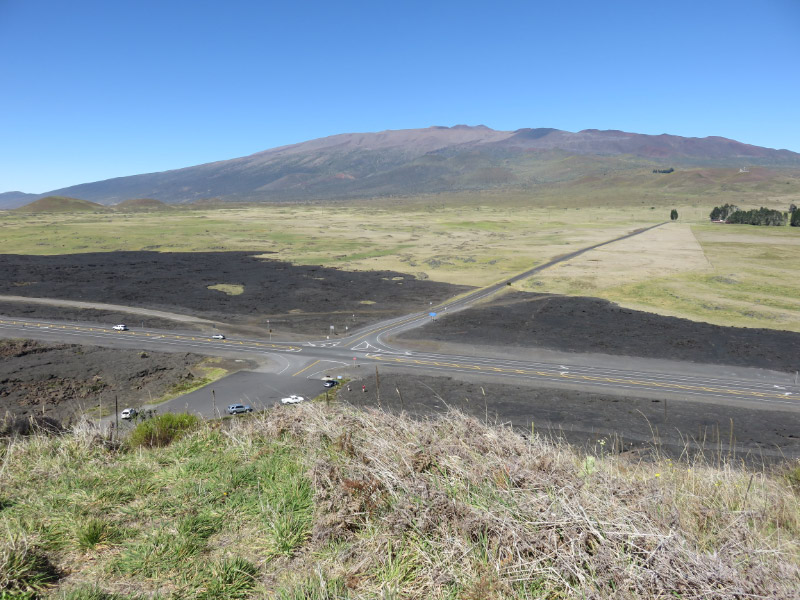
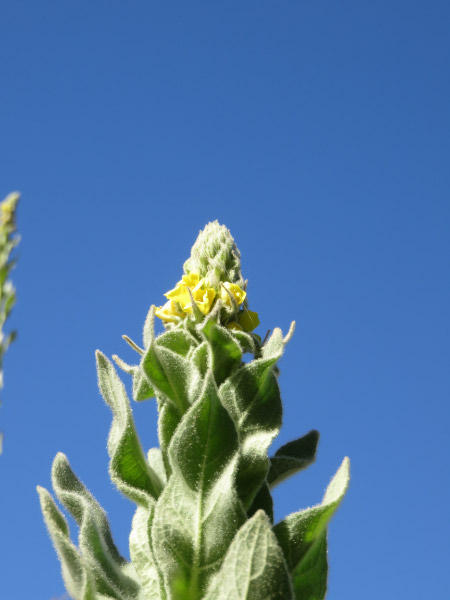 We climbed the Kipuka and had a snack. I could already feel that the elevation has changed a little. A thin layer of very dark lava is along both sides of the saddle road at this point.The kipuka provided and opportunity for some close up pictures of common mullein (an invasive at higher elevations in Hawaii) and
We climbed the Kipuka and had a snack. I could already feel that the elevation has changed a little. A thin layer of very dark lava is along both sides of the saddle road at this point.The kipuka provided and opportunity for some close up pictures of common mullein (an invasive at higher elevations in Hawaii) and
Some other plants.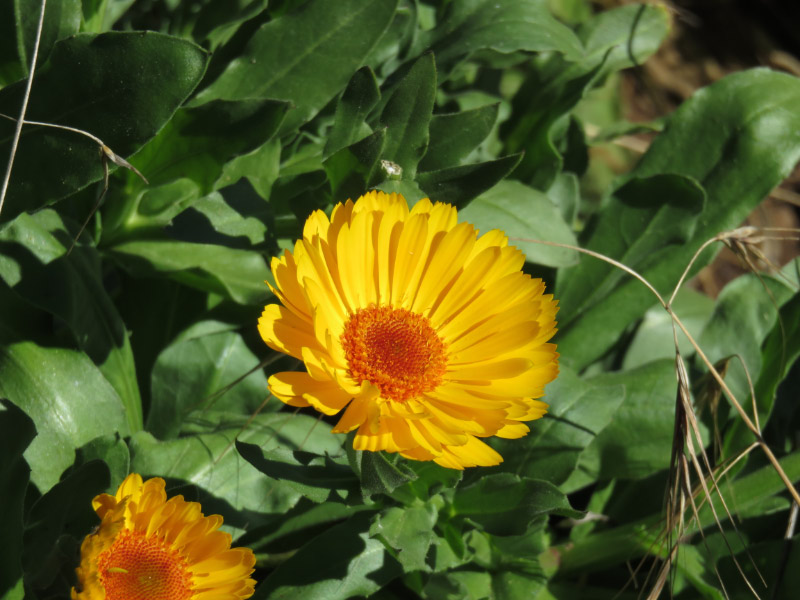
Then we drove up to the Maunakea Visitor Information Station. This part of the road is still paved and easy enough in a regular vehicle. Everyone is required to stay at the information station for at least an hour before proceeding up the mountain. We drank a lot more water and ate some crystalized ginger. Our strategy worked…no headaches, no nausea…our bodies were responding to the altitude change reasonably well although we were intentionally not doing any fast walking or running. We made use of our hour with some shopping in the store, observing the cloud deck that was below us and
The side of the mountain above us.
The road from the visitor information station and the telescopes is not paved and often bumpy. It requires a 4-wheel drive vehicle. At the top it is cold and windy. We were prepared with coats and gloves. Our original plan was to tour the Keck but it was not open when we were there but we drove around on the road connecting the telescopes taking pictures of them from the outside and down the mountain. It was bitterly cold and windy…and the altitude (14,000 feet!) made it hard to do anything quickly.
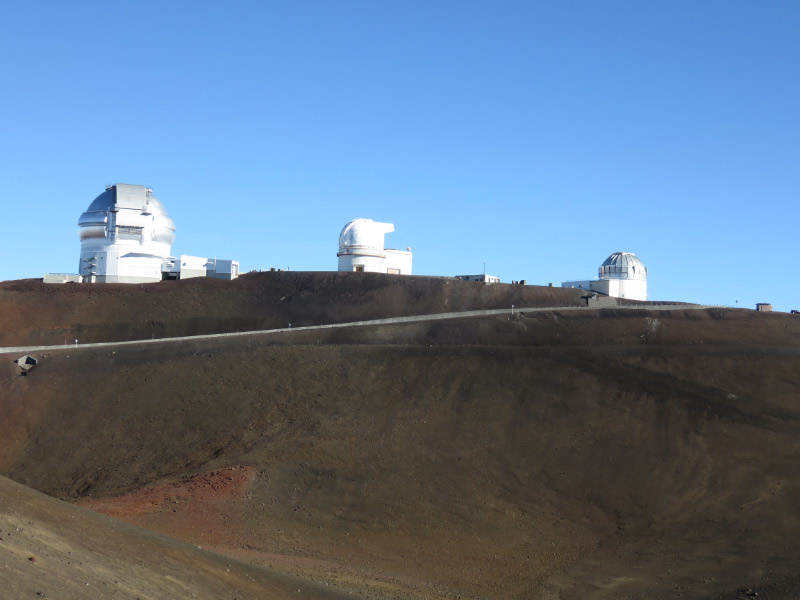
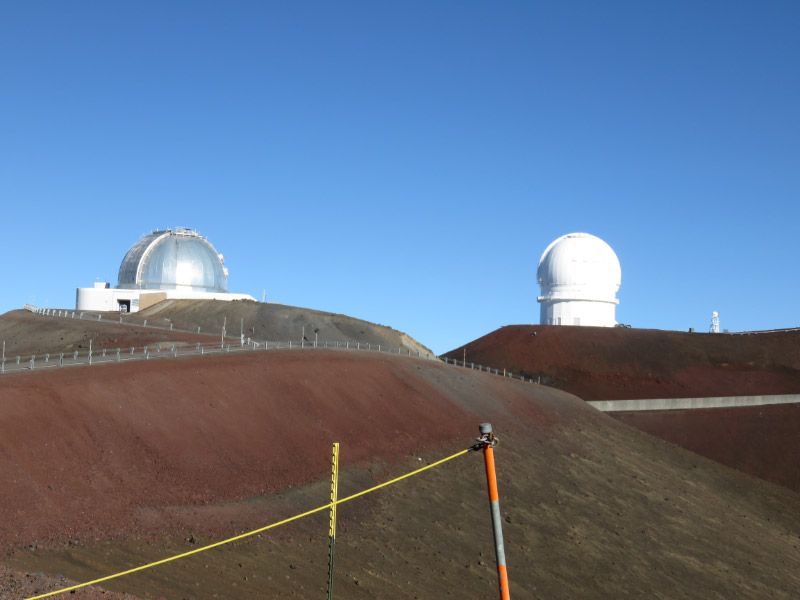

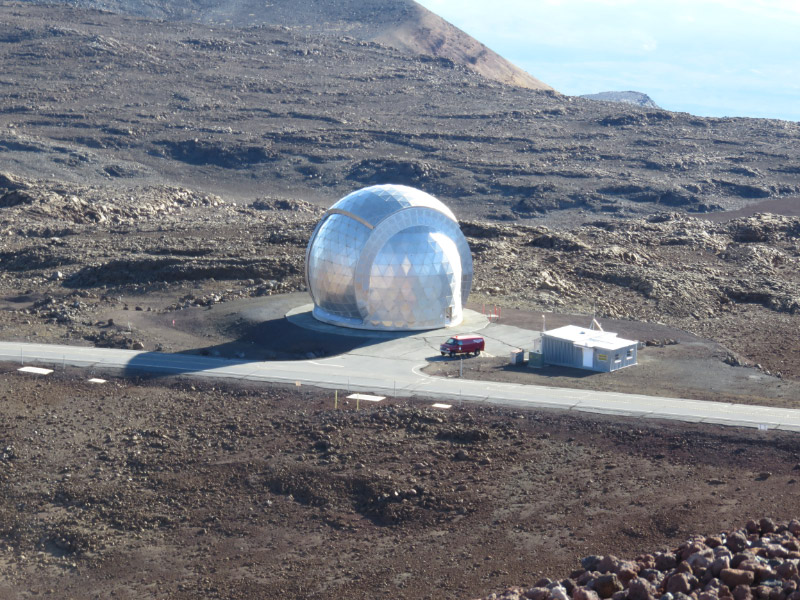
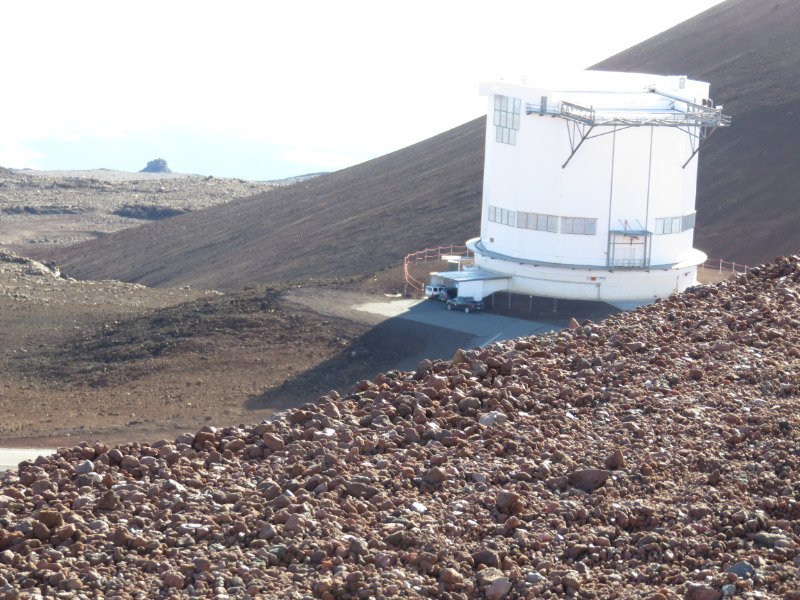
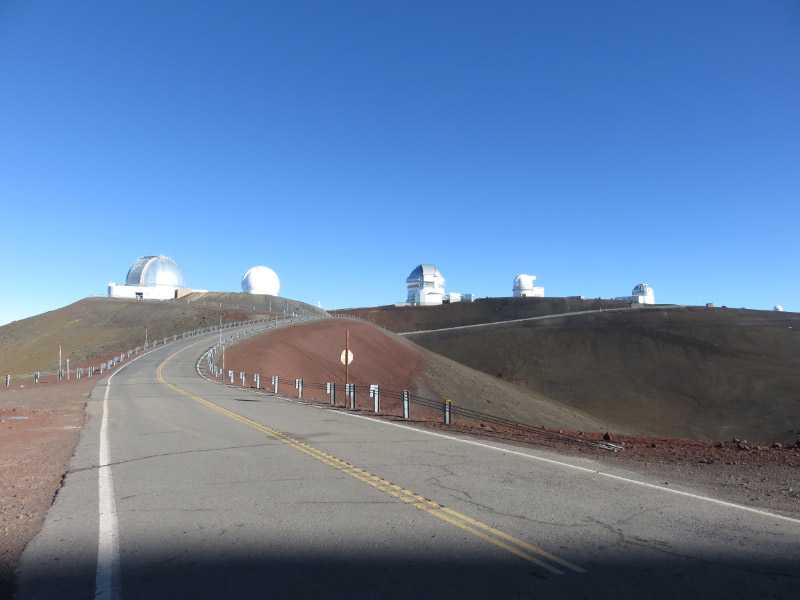


We got our parking spot for sunset. There were other people with the same idea. Everyone huddled in their cars between forays to take pictures. The two round domes connected to each other are the Keck. The sunset at the cloud deck….and you see the mountains of Maui peeking through the clouds in the distance behind the telescopes.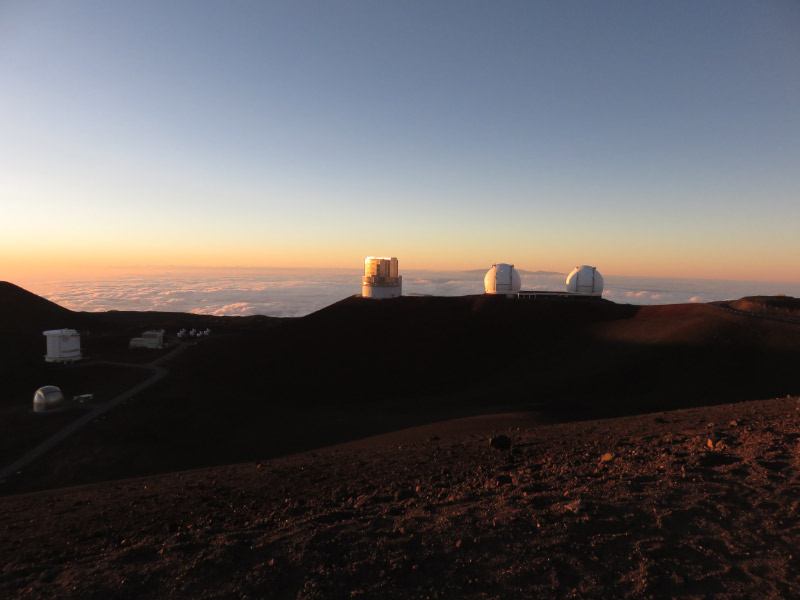
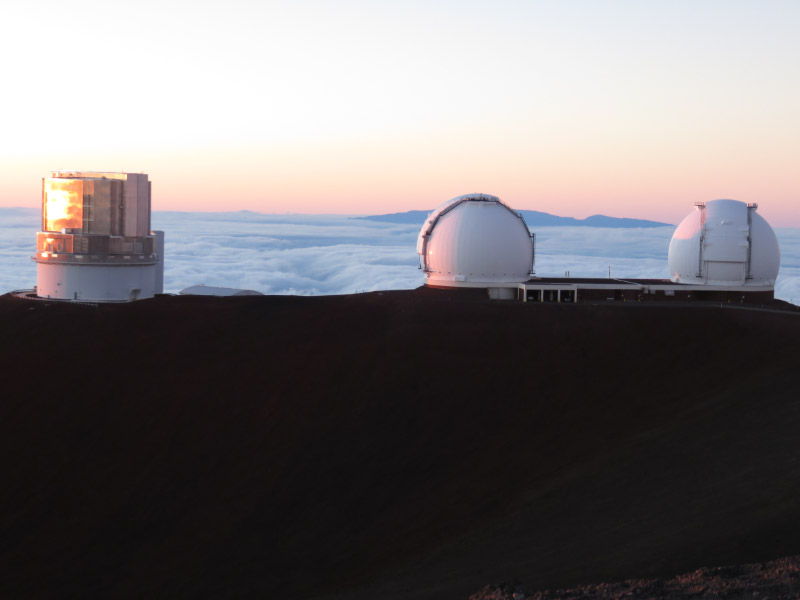
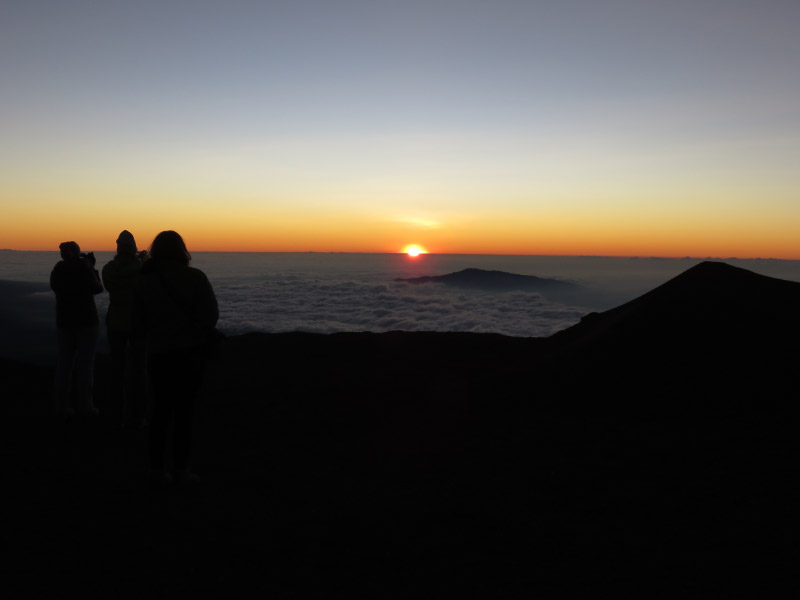
As we got ready to head down the mountain, we commented that it must have been too windy for the telescopes to open…..but as we made our way down the road our line of sight changed and we saw that one of the Keck’s had opened.
Everyone is required to come down the mountain within 15 minutes of sunset. The visitor center hosts star viewing…..and then it is time to head for our vacation rental in Volcano HI.
Previous Hawaii Posts:

